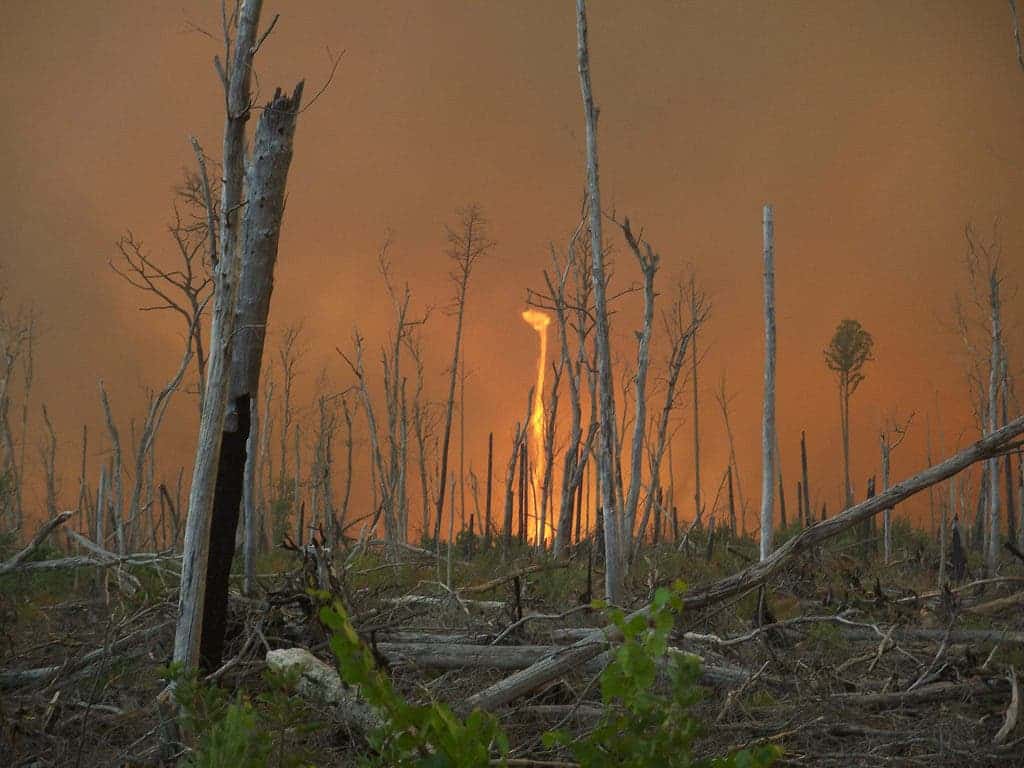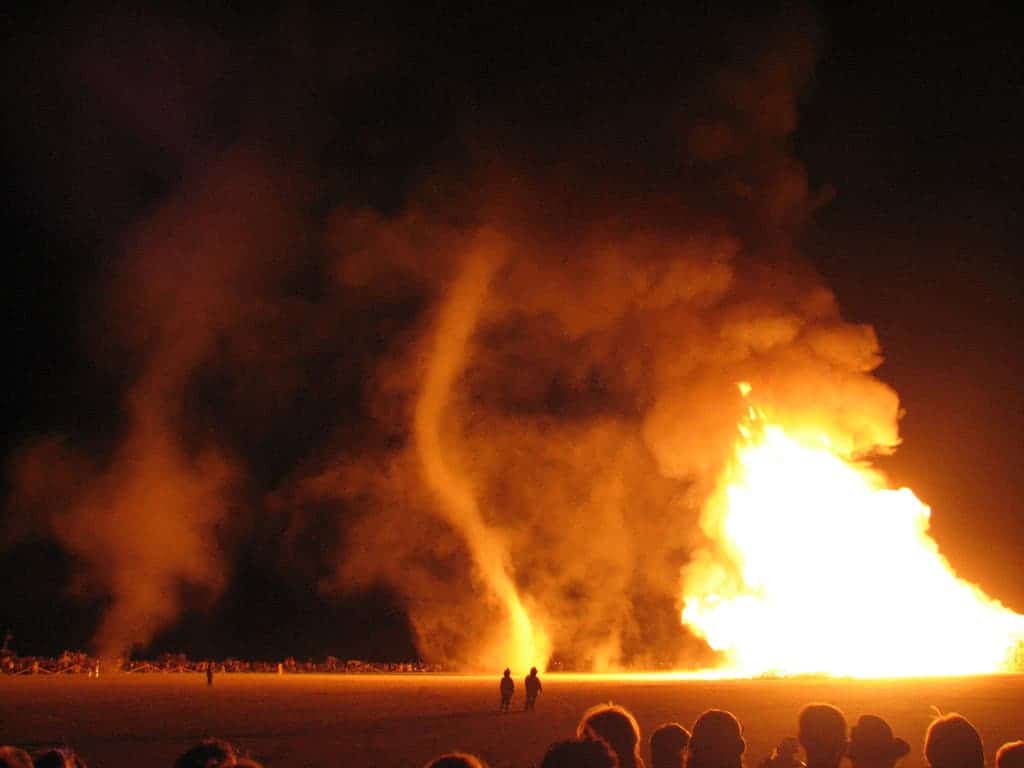Sometimes, nature just goes crazy and mixes fire and tornadoes. Fire tornadoes are a real thing and they’re scary as hell.

Fire whirls, fire devils, or even firenadoes, as they are known, are not at all as uncommon as you might think. Still, they are extremely rarely documented because they tend to appear in forest wildfires more often than in urban fires. As the saying goes, if a fire tornado erupts in the middle of the forest, does it still scare someone?

Fire tornadoes are pretty much what you would expect from them; in certain specific conditions, a fire can acquire vertical vorticity (tendency to spin) and form a whirl. The formed tornado is usually 10-50 meters tall and only a few meters wide, but it has a significant destructive potential, not only because of the wind, but because it can spread the fire even further, and it’s extremely unpredictable. However, they can grow up to gargantuan sizes, more than half a kilometer, with winds of over 150 km/h. Usually, they last only a few minutes, but there have been reported cases with fire tornadoes lasting almost an hour. The important thing here is that the fire itself causes the whirl — it’s not like a pre-existing whirl simply catches on a fire, it’s the fire that promotes this phenomenon.

True fire tornadoes are quite rare, much more so than fire whirls. But when they do strike, they strike with incredible voracity. In order to imagine just how deadly a fire tornado can be, we would have to go back in time, to an earthquake that took place in 1923, in Japan. The earthquake led to a huge fire that in turn, created a fire tornado. It took the tornado just 15 minutes to kill 38.000 people. Another remarkable example dates from 1926, when lightning struck an oil storage facility near San Luis Obispo, California. Many fire whirlwinds were produced, wreaking havoc on the facility. More recently, the 2017 Port Hills fires in Christchurch also created several fire tornadoes.

Researchers have tried to develop models to predict the emergence of fire whirls. Robert Meroney, from the Colorado State University, built an experimental fire tornado (needless to say, don’t try it at home) and predicted, to some extent, their development. However, fire tornadoes remain a rather erratic phenomenon, with little in the way of predictability.
Even experienced firefighters are sometimes taken by surprise by them, as was the case with this fellow, who had to run and jump in a river to escape one.


